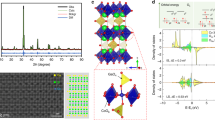Abstract
Bio-hydrogen production in light-assisted microbial electrolysis cell (MEC) with a dye sensitized solar cell (DSSC) was optimized by connecting multiple MECs to a single dye (N719) sensitized solar cell (VOC approx. 0.7 V). Hydrogen production occurred simultaneously in all the connected MECs when the solar cell was irradiated with light. The amount of hydrogen produced in each MEC depends on the activity of the microbial catalyst on their anode. Substrate (acetate) to hydrogen conversion efficiencies ranging from 42% to 65% were obtained from the reactors during the experiment. A moderate light intensity of 430 W m−2 was sufficient for hydrogen production in the coupled MEC-DSSC. A higher light intensity of 915 W m−2, as well as an increase in substrate concentration, did not show any improvement in the current density due to limitation caused by the rate of microbial oxidation on the anode. A significant reduction in the surface area of the connected DSSC only showed a slight effect on current density in the coupled MEC-DSSC system when irradiated with light.
Similar content being viewed by others
References
B. E. Logan, J. M. Regan, Electricity-producing bacterial communities in microbial fuel cells, Trends Microbiol., 2006, 14, 512–518.
C. I. Torres, A. K. Marcus, B. E. Rittmann, Kinetics of consumption of fermentation products by anode-respiring bacteria, Appl. Microbiol. Biotechnol., 2007, 77, 689–697.
B. E. Logan, D. Call, S. Cheng, H. V. M. Hamelers, T. H. J. A. Sleutels, A. W. Jeremiasse, R. A. Rozendal, Microbial Electrolysis Cells for High Yield Hydrogen Gas Production from Organic Matter, Environ. Sci. Technol., 2008, 42, 8630–8640.
H. Liu, S. Grot, B. E. Logan, Electrochemically Assisted Microbial Production of Hydrogen from Acetate, Environ. Sci. Technol., 2005, 39, 4317–4320.
S. Cheng, B. E. Logan, Sustainable and efficient hydrogen production via electrohydrogenesis, Proc. Natl. Acad. Sci. U. S. A., 2007, 104, 18871–18873.
T. H. J. A. Sleutels, H. V. M. Hamelers, R. A. Rozendal, C. J. N. Buisman, Ion transport resistance in Microbial Electrolysis Cells with anion and cation exchange membranes, Int. J. Hydrogen Energy, 2009, 34, 3612–3620.
F. F. Ajayi, K. Y. Kim, K. J. Chae, M. J. Choi, S. Y. Kim, I. S. Chang, In S. Kim, Study of hydrogen production in light assisted microbial electrolysis cell operated with dye sensitized solar cell, Int. J. Hydrogen Energy, 2009, 34, 9297–9304.
B. O’Regan, M. Gratzel M, A low cost, high efficiency solar cell based on dye sensitized colloidal TiO2 films, Nature, 1991, 353, 737–740.
M. Gratzel, Conversion of sunlight to electric power by nanocrystalline dye sensitized solar cell, J. Photochem. Photobiol., A, 2004, 164, 3–14.
M. Gratzel, Photoelectrochemical cells, Nature, 2001, 414, 338–344.
E. Ramasamy, W. J. Lee, D. Y. Lee, J. S. Song, Spray coated multi-wall carbon nanotube counter-electrode for tri-iodide reduction in dye-sensitized solar cells, Electrochem. Commun., 2008, 10, 1087–1089.
W. J. Lee, E. Ramasamy, D. Y. Lee, J. S. Song, Efficient Dye-Sensitized Solar Cells with Catalytic Multiwall Carbon Nanotube Counter Electrodes, ACS Appl. Mater. Interfaces, 2009, 1, 1145–1149.
J. Chen, K. Li, Y. Luo, X. Guo, D. Li, M. Deng, S. Huang, Q. Meng, A flexible carbon counter-electrode for dye-sensitized solar cells, Carbon, 2009, 47, 2704–2708.
Y. Chiba, A. Islam, Y. Watanabe, R. Komiya, N. koide, L. Han, Dye-sensitized solar cells with conversion efficiency of 11.1%, Jpn. J. Appl. Phys., 2006, 45, L638–L640.
M. K. Nazeeruddin, P. Péchy, T. Renouard, S. M. Zakeeruddin, R. Humphry-Baker, P. Comte, P. Liska, L. Cevey, E. Costa, V. Shklover, L. Spiccia, G. B. Deacon, C. A. Bignozzi, M. Grätzel, Engineering of efficient panchromatic sensitizers for nanocrystalline TiO2-based solar cells, J. Am. Chem. Soc., 2001, 123, 1613–1624.
K. J. Chae, M. J. Choi, J. W. Lee, F. F. Ajayi, I. S. Kim, Bio-hydrogen production via biocatalyzed electrolysis in acetate fed bio-electrochemical cells and microbial community analysis, Int. J. Hydrogen Energy, 2008, 33, 5184–5192.
K. J. Chae, M. J. Choi, F. F. Ajayi, W. Park, I. S. Chang, I. S. Kim, Mass transport through a proton exchange membrane (Nafion) in microbial fuel cells, Energy Fuels, 2008, 22, 169–176.
S. Freguia, K. Rabaey, Z. Yuan, J. Keller, Electron and Carbon Balances in Microbial Fuel Cells Reveal Temporary Bacterial Storage Behavior during Electricity Generation, Environ. Sci. Technol., 2007, 41, 2915–2921.
R. Sastrawan, J. Beier, U. Belledin, S. Hemming, A. Hinsch, R. Kern, C. Vetter, F. M. Petrat, A. Prodi-Schwab, P. Lechner, W. Hoffmann, A glass frit-sealed dye solar cell module with integrated series connections, Sol. Energy Mater. Sol. Cells, 2006, 90, 1680–1691.
A. Melis, Green alga hydrogen production: progress, challenges and prospects, Int. J. Hydrogen Energy, 2002, 27, 1217–1228.
M. Hambourger, A. Brune, D. Gust, A. L. Moore, T. A. Moore, Enzyme assisted reforming of glucose to hydrogen in a photo-electrochemical cell, Photochem. Photobiol., 2005, 81, 1015–1020.
M. Hambourger, P. A. Liddell, D. Gust, A. L. Moore, T. A. Moore, Parameters affecting the chemical work output of a hybrid Photo-electrochemical biofuel cell, Photochem. Photobiol. Sci., 2007, 6, 431–437.
Author information
Authors and Affiliations
Corresponding author
Rights and permissions
About this article
Cite this article
Ajayi, F.F., Kim, KY., Chae, KJ. et al. Optimization studies of bio-hydrogen production in a coupled microbial electrolysis-dye sensitized solar cell system. Photochem Photobiol Sci 9, 349–356 (2010). https://doi.org/10.1039/b9pp00097f
Received:
Accepted:
Published:
Issue Date:
DOI: https://doi.org/10.1039/b9pp00097f




